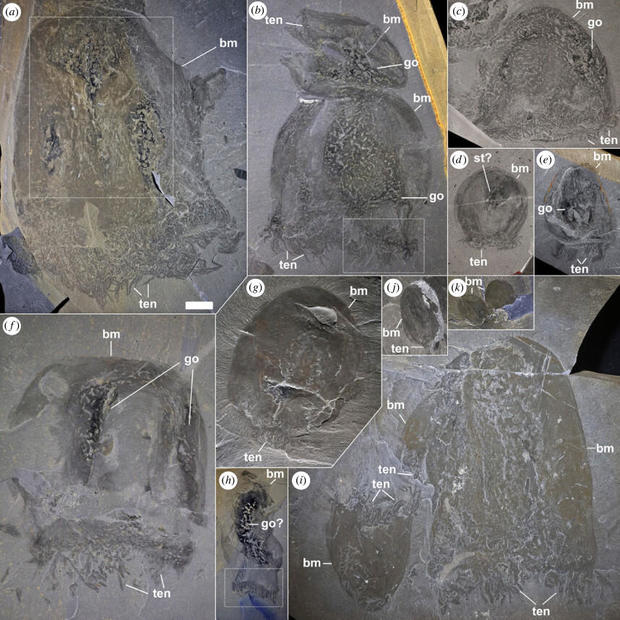World's oldest known swimming jellyfish species found in "exceptional" fossils buried within Canada mountains
The Canadian Rocky Mountains offer more than scenic views: The mountains have been hiding fossils of an ancient jellyfish species.
Researchers analyzed 182 fossils that were found in the middle Cambrian Burgess Shale within Canada's Yoho and Kootenay National Parks, which are within the Canadian Rocky Mountain Parks World Heritage Site. The Burgess Shale – nestled on a high mountain ridge in Yoho National Park – is known for holding the records of early marine ecosystems.
According to the Smithsonian National Museum of Natural History, the fossils were "buried in an underwater avalanche of fine mud" that helped preserve them, and when the mountains formed – likely in a collision event with a microcontinent – it helped give rise to those fossils. These fossils included in the study were found in the late '80s and '90s under the Royal Ontario Museum and were "exceptionally preserved."
What they discovered is the fossils belonged to an unknown species.
"Finding such incredibly delicate animals preserved in rock layers on top of these mountains is such a wonderous discovery. Burgessomedusa adds to the complexity of Cambrian foodwebs, and like Anomalocaris which lived in the same environment, these jellyfish were efficient swimming predators," study co-author Jean-Bernard Caron said. "This adds yet another remarkable lineage of animals that the Burgess Shale has preserved chronicling the evolution of life on Earth."
The fossils belonged to the newly named Burgessomedusa phasmiformis, a species of swimming jellyfish believed to be the oldest swimming jellyfish species on record. It's believed that the creatures grew to be nearly 8 inches long in some cases, and that they were able to swim. They also had more than 90 "finger-like tentacles," the study says.
These findings were published in Proceedings of the Royal Society B, Biological Sciences, on Wednesday.
Jellyfish, as well as coral and anemones, belong to the phylum Cnidaria, a classification in which all members have cells that allow them to sting. These are some of the oldest groups of animals to ever exist on Earth. In a press release, the Royal Ontario Museum said that the newly named species "shows that large, swimming jellyfish with a typical saucer or bell-shaped body had already evolved more than 500 million years ago."
"Although jellyfish and their relatives are thought to be one of the earliest animal groups to have evolved, they have been remarkably hard to pin down in the Cambrian fossil record," said study co-author Joe Moysiuk, a Ph.D. candidate at the University of Toronto. "This discovery leaves no doubt they were swimming about at that time."
Any jellyfish fossil is considered "extremely rare," according to the museum, as the creatures are made of roughly 95% water.






